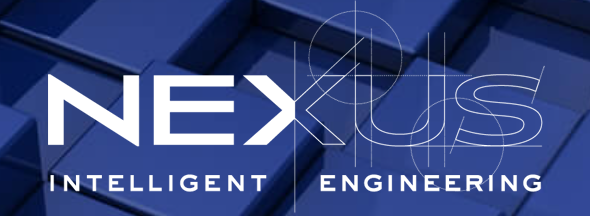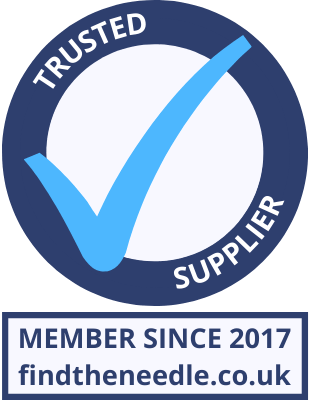 Add My Company
Add My Company
Sign In
What is Intellectual Property?
12-12-2018

Protecting your intellectual property at an early stage is essential so that you can safely start connecting with people who can help you such as investors and manufacturers but what is intellectual property and how can you go about using it to protect your products and idea?
Intellectual property refers to something unique that you create. Patents, designs, trade marks and copyright are all types of intellectual property protection and allow you to prevent others from using your invention, design, mark or original work.
What is a patent?
A patent is used to protect technical inventions. Patents give you the right to stop others from using your invention without your permission, for a limited period of time (20 years) in the countries where you have patent protection.
Can all inventions be patented?
To be patentable, your invention must be new and inventive. In regard to your invention being inventive, i.e. not an obvious next step from what is already known.
In the UK, certain inventions cannot be patented, including those relating to a method of doing business, playing a game, presentations of information and some computer programs.
Additionally, methods of treatment of the human or animal body and diagnoses practised on the body are excluded from patentability. However, medical devices and diagnostic kits may patentable.
Can I discuss my invention with others?
Before the filing of your patent application, any public disclosure of your invention (e.g. advertising or presenting your invention, publically discussing your invention) could prevent you from obtaining a granted patent. You should not tell anyone about your invention unless there is a clear understanding that your disclosure is confidential.
In circumstances where it is necessary that you disclose your invention, such as with potential investors, a non-disclosure or confidentiality agreement may be useful. It is also sensible to mark your documents “CONFIDENTIAL” and ask the other party to acknowledge that they are confidential.
It is important to take these precautions, as there is a chance that the party with whom you had discussions may apply for a patent for your invention before you. You do not want to be in the position of having to argue entitlement to your invention.
How do I file a patent application and what are the next steps?
A patent attorney can advise whether it is worth filing a patent application – taking into account the new and inventive considerations. Therefore, it is strongly recommended to seek advice from a patent attorney to write your patent application and file it at the relevant Patent Office. Once filed, the scope of the invention is locked. Therefore, it is very important that the scope is correct on filing.
The Patent Office will then start to search and examine your invention to see if they consider it new and inventive. They will provide an examination report and you may have to amend your patent in light of the documents found by the Patent Office.
Each jurisdiction requires payment of annual renewal fees. These fees are usually payable after the grant of your patent, but some jurisdictions require that fees are paid before grant.
What can I do with a patent?
A non-exhaustive list of what you can do with a patent for an invention:
Market your invention;
Use it to stop third parties from e.g. manufacturing and using your invention;
License your invention to third parties;
Sell your patent.
Designs
A design is the appearance of a product, such as its shape or ornamentation. Both registered and unregistered design rights exist as forms of protection, in the UK and EU.
Registered designs
In order to obtain a registered design right, it is necessary to register your design, at the relevant Intellectual Property Office. A registered design gives you a right to stop third parties from using your design without your permission – you don’t need to prove that there was any copying. The maximum duration of a registered design right is 25 years. Like patents, registered designs are territorial and require renewal fees. The renewal fee for registered designs is payable every five years.
In the UK and EU, the requirements for registration are that your design is new, has individual character over designs which have previously been disclosed.
What cannot be registered as a design?
A design registration cannot be used to protect appearance of features of a product which are solely dictated by the product’s technical function. In other words, if there is only one design that works technically, then the design is solely dictated by function and is excluded from protection.
Features of a design which are required in order to connect to or to fit another product so that either product may perform its function are also excluded from protection. However, modular systems are protectable.
Can I discuss my design with others?
In the UK and EU, there is a twelve month grace period before the filing date of the design application in which the designer may disclose their design. There are risks associated with this, for example, such disclosures may prevent registration of the design in foreign countries, where a grace period is not recognised or is shorter.
Unregistered designs
Unregistered design rights arise automatically. There is no formal registration process and no fee. If you want to prevent someone from using your unregistered design, you must prove that the third party copied your design.
In the UK, unregistered design right lasts for a maximum of 15 years from the end of the calendar year in which the design was first recorded, or 10 years from the end of the calendar year in which an article made to the design was first sold.
In the EU, unregistered design right lasts for 3 years from the first disclosure in the EU.
Trade marks
Many businesses rely on some form of branding. The use of symbols or marks which are associated with your goods and/or services can distinguish yours from other traders. In order to protect your brand, you can register these symbols as trade marks.
What can and cannot be registered as a trade mark?
A trade mark is something which allows consumers to identify the origin of the goods or services offered by a business. Trade mark registrations can include logos, words, sounds, colours or a combination of any of these. A trade mark must be distinctive, not descriptive and not deceptive.
A trade mark can potentially provide you with indefinite brand protection, so long as the renewal fees are paid (every ten years).
What does having a registered trade mark allow me to do?
By registering your trade mark, you will have exclusive rights to use it and will be able to stop others from using it without your permission
What could happen if I don’t register my trade mark?
It may still be possible to prevent others from using your brand even if you haven’t registered it, by bringing a “passing off” action.
However, this involves you having to prove several things, such as you have generated goodwill, that consumers associate your mark with your goods and/or services and that you have a positive reputation in your goods and/or services. This can be expensive and difficult.
Copyright
Copyright protection arises automatically upon creation of an original work, therefore there is no procedure for registering your copyright and no fees. To enforce your copyright and stop a third party from using your works without your permission, you need to prove that the third party copied your work.
Copyright lasts for a period of 70 years from the death of the author.
Which types of works does copyright apply to?
Copyright applies to works such as literary, dramatic, musical or artistic and sound recordings, films, broadcasts and books.
Summary
Intellectual property can be vital to ensuring the success of a business and, during the early life of a company, it can be its only tangible asset. Intellectual property can also make the difference when trying to secure investment in your new product or service. It is therefore strongly recommended to seek advice from a qualified patent and trade mark attorney to determine what can be done to protect your inventions and brand from being copied by others.
For more information on What is Intellectual Property? talk to Nexus IE Ltd Intelligent Engineering
Enquire Now
List your company on FindTheNeedle.

